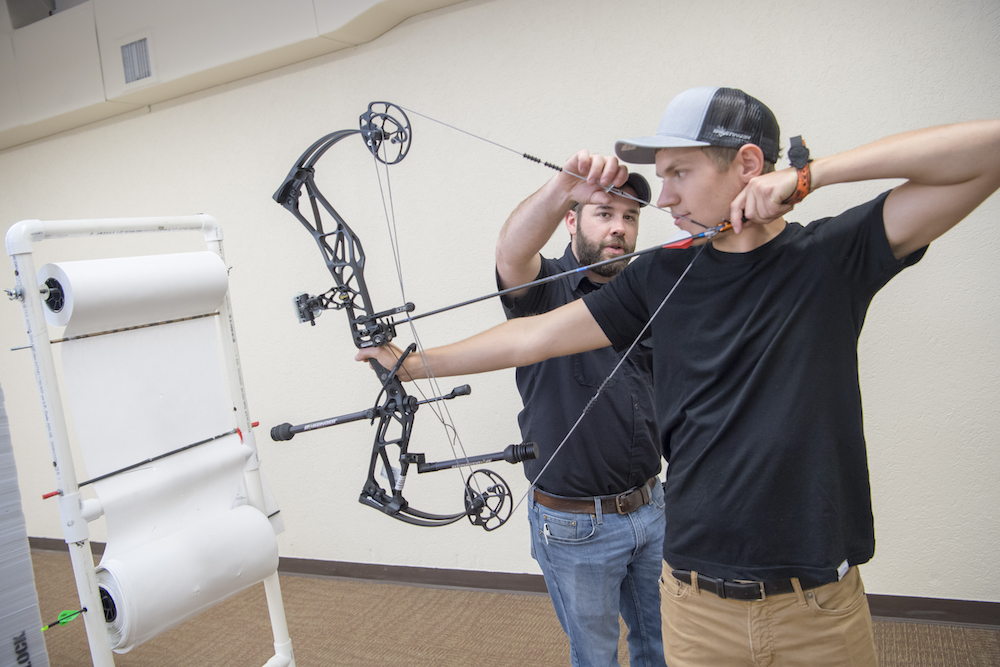The switch from outdoor to indoor archery comes with a change of distance and conditions, and so the equipment an archer uses can greatly vary. Besides modifying things such as the bow’s balance, sight pin size and scope magnification, the age-old question of “which arrow size should I shoot indoors?” will always rear its ugly head.

The appeal of shooting an arrow with a larger-diameter shaft is simple: If the arrow touches the line of the next higher scoring ring, you get the higher score. Therefore, bigger arrows can potentially “catch” more points compared with their skinny counterparts. But switching to bigger-diameter arrows for the indoor season does have some drawbacks, particularly for recurve archers. Switching to a bigger arrow also means you’ll need to do some tuning to ensure that the arrow is paired well with the bow and is as forgiving as possible (so the difference in where the arrow lands isn’t significant between good and bad shots). Not only will the tuning change slightly, but the feel of the bow will also change; bigger arrows are generally heavier than small outdoor arrows, so the reaction of the bow will be more muted and slower. This can cause some slight challenges because of the extra time the string spends in the recurve archer’s fingers, as well as the longer time it takes for the riser to leave the hand upon release.
So, what can be done about this? Most professional-level archers will actually keep a bow set up for indoor shooting, where the bow and big arrows are kept tuned to each other even during outdoor season. However, this option is not for everyone because most archers own just one bow. For the average archer to counteract the difference in the feeling of the bow, a change in stabilization is usually the easiest option. If the bow is feeling slower upon release, removing some stabilizer weight will help your bow move more, thus mimicking the feeling of your bow when shooting smaller and lighter arrows. Experimenting with different weight options will enable you to figure out what feels best.
If switching to a bigger arrow isn’t an option for you, then there is no harm in using your outdoor arrows for indoor shooting. This eliminates the need to re-tune your bow or to find another stabilization weight distribution to counteract a bow that feels different due to a switch in arrows. One possibility, though, is changing the size of the fletching on the arrows. Since the arrows will travel a much shorter distance, their flight will need to be corrected slightly faster. A bigger fletching with more surface area will help to stabilize the arrows quicker so they’re flying straight before they are 18 meters downrange. Shooting outdoor arrows during indoor season has another advantage: Outdoor arrows are quicker and more forgiving, so they will not show the small errors that the archer makes upon release. This can naturally lead to higher scores without needing the “line-catching” advantage of arrow shafts with a big diameter.
Bottom line, you should choose whichever arrow size gives you the highest scores on the indoor range, regardless of what other archers around you have chosen to shoot. Many archers have won world-level indoor competitions using skinny outdoor arrows against opponents who were shooting with large-diameter arrows. Practice lots, and trust your equipment.




